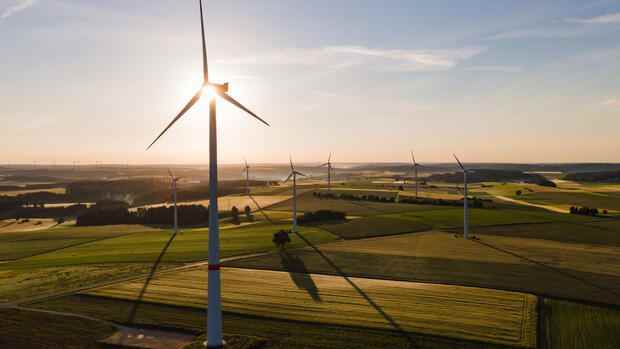The new federal government wants to accelerate the goals significantly.
(Photo: dpa)
Anyone who takes a look at the plans of the future federal government in the field of energy and climate has to look twice. It seems as if someone has finally listened to the long-standing demands from science, business and communities.
The coalition agreement of the traffic light parties contains everything that makes the hearts of the energy industry beat faster: faster permits, more sun, more wind, more hydrogen. But also new gas-fired power plants, no increase in the CO2 price before 2026 and the abolition of the renewable energy surcharge on the electricity bill. This is how the energy transition could actually succeed.
The coalition partners clap each other on the shoulder. Mind you for measures that are in no way new, but simply overdue.
But as the saying goes: When everyone is satisfied, there is usually something wrong. In this case, that could be the targeted speed of the massively increased targets. 80, instead of 60 percent green electricity by 2030 is highly desirable from a climate point of view, but realistically this would also mean that more renewable systems will have to be built in the next eight years than in the past 15 years combined. The climate-conscious citizen wants nothing more.
Top jobs of the day
Find the best jobs now and
be notified by email.
But the experiences of the past and the German bureaucracy of the present naturally raise great doubts as to whether these plans can actually be implemented. Not to mention the increased demand for raw materials with such an accelerated expansion of wind and solar systems.
The metals for the energy transition are currently not only more expensive than ever before, but also threaten to become scarce for the time being with the global boom in the coming years. Nevertheless, it is a good sign that, thanks to the Greens, detailed measures, goals and funding have finally made it into the coalition agreement.
Noble goals, few solutions
But if you take a closer look, you will also see that in addition to all the euphoria, there are a few neglected energy topics that have still not made it onto the agenda.
Take the heating transition, for example: The sector in which Germany causes some of the most emissions is the heating and cooling of plants, buildings and industrial processes. The share of renewable energies is just 15 percent.
The traffic light coalition wants to increase this proportion to 50 percent by 2030. How this is supposed to be achieved is not stated in the paper. The situation is similar when it comes to electromobility. 15 million Stromer are to roll on German roads by the end of the decade. Here, too, not a word about the “how”.
The new coalition agreement may be a paradigm shift in energy policy. It remains to be seen whether this policy will also become a turning point for the energy world.
More: From “momentum for the energy transition” to “bad checks” – how the economy evaluates the traffic light plans
